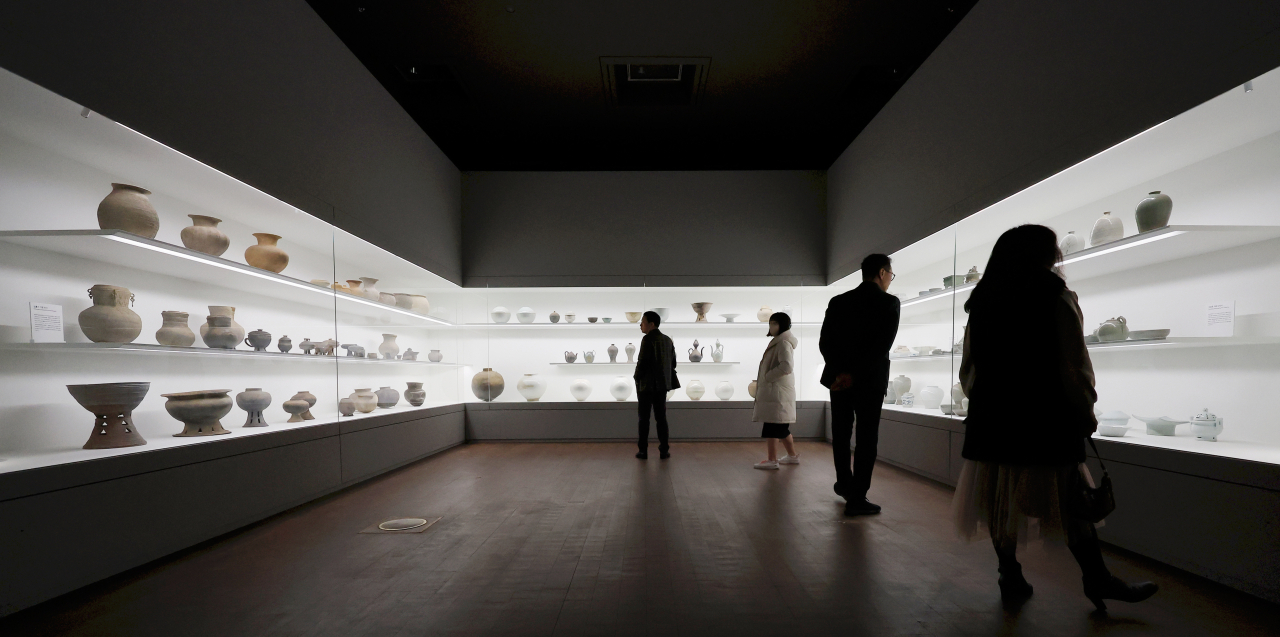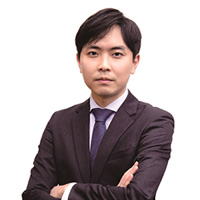
For the late Choi Young-do, a prolific antiquities collector, earthenware represented “radiating warmth and charm.”
Choi is one of 114 donors recognized Thursday as the National Museum of Korea unveiled its renovated donor galleries, showcasing 1,671 pieces ranging from pottery and craft to paintings and relief, following a two-year overhaul.
“Pottery in particular was of interest to my father and he made it his mission to ‘protect what’s rightfully Korea’s,’” Choi Yoon-sang, the late collector’s 55-year-old son, said of 1,719 artifacts the late collector had gifted, during a tour following the reopening ceremony.
The donated collection provides an overview of how Korean earthenware evolved, a curator said. According to Choi, the son, the pottery collection came at a cost, because at one time the late Choi gave up on a decent three-bedroom apartment in Seoul just to beat a competing bidder to acquire a “uniquely shaped” piece of Korean pottery.
“That was in the 1970s and ’80s, and the offer is believed to have come from someone at the French Embassy here, to my recollection,” Choi said, noting the family had not regretted the decision.
“Look at these galleries now, sophisticated and gorgeous. This is the kind of change you expect as time goes by,” Choi added.
The redesigned galleries use theatrical lighting and mockups of artifacts to make the tour more fun and less dutiful. An Al-powered robot guide will entertain guests from February.
“Honestly, I’m overwhelmed,” said Yoo Chang-jong, a donor whose collection of 1,875 roof tiles has amazed museum officials because some of the tiles come from not only Korea but also China, Japan and Southeast Asian countries.
Yoo, a 79-year-old who has his own museum of roof tiles, had been a vocal supporter calling for a gallery makeover, because the donor galleries didn’t seem to “connect with visitors.” Previously, artifacts were placed under each donor’s names, making it harder for visitors to group artifacts and understand them chronologically.
“Now that the galleries have pooled in every donated collection and rearranged it in a way the show finally tells a story, I’m more than satisfied. I’m thrilled to see this place inundated with people,” Yoo said, referring to the four halls each carrying a Korean, foreign, and contemporary collection, as well as a room for donors. Similar artifacts have now been grouped together.
Meanwhile, Park Ro-won, the 91-year-old daughter of a donor who gifted the museum with mainly Joseon-era (1392-1910) porcelain before passing away in 1974, called for attention to “things that have to do with Korean identity.”
“I’m proud of my father. He was a doctor day and night but he set aside time studying what he could do to carry on Korean traditions,” Park said of her father, Park Byoung-rae, who had donated some 400 pieces.
Among the highlights of the exhibit are a lacquered mother-of-pearl box dating to the Goryeo Kingdom (918-1392) and a Greek bronze helmet donated in 1994 by the late runner Sohn Kee-chung -- the first ethnic Korean to win an Olympic gold medal in 1936. The box and helmet are designated as “Treasures.”
Separately, two other gifted works will be showcased until May 5, according to the National Museum of Korea. They are the 19th-century Joseon-era ink painting, “Sehando,” by Kim Jeong-hui, a rare work by a scholar known for calligraphy, and the 14th-century Goryeo-era Buddhist painting “Suwolgwaneumdo,” or the “Water-Moon Avalokiteshvara” -- a Buddhist deity of compassion.
“Two things were on our mind as we were turning the galleries around,” said Kim Hye-kyong, a curator of the World Arts Division at the National Museum of Korea. “We wanted to send out a message on donations, and have as many people as possible come in, for fun.”






![[Weekender] How DDP emerged as an icon of Seoul](http://res.heraldm.com/phpwas/restmb_idxmake.php?idx=644&simg=/content/image/2024/04/25/20240425050915_0.jpg&u=)



![[KH Explains] No more 'Michael' at Kakao Games](http://res.heraldm.com/phpwas/restmb_idxmake.php?idx=644&simg=/content/image/2024/04/28/20240428050183_0.jpg&u=20240428180321)







![[Herald Interview] Mistakes turn into blessings in street performance, director says](http://res.heraldm.com/phpwas/restmb_idxmake.php?idx=652&simg=/content/image/2024/04/28/20240428050150_0.jpg&u=20240428174656)
